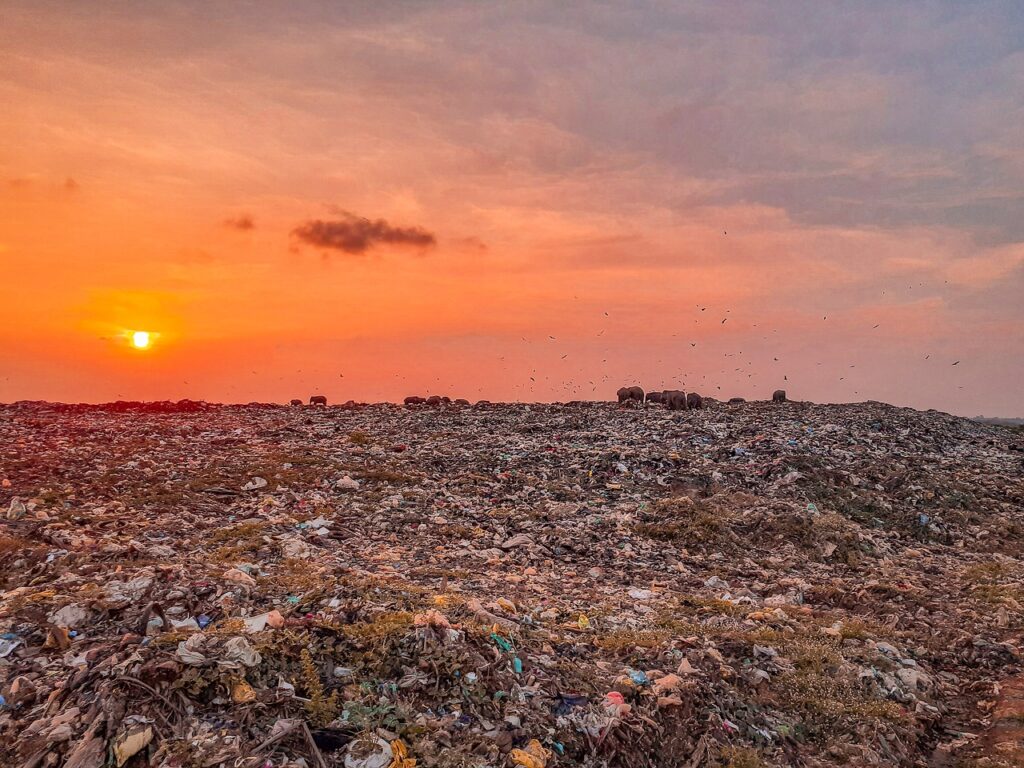The fashion industry has been facing various challenges in its journey towards becoming more sustainable and ethical. Despite the growing demand for sustainable fashion, the path to achieving it is not without obstacles. In this blog, we will delve into the challenges that the industry faces and suggest practical solutions for creating a fashion-forward and eco-conscious world.
1. The Fast Fashion Mix-up
Fast fashion is a big challenge for sustainability. It’s a way of making clothes quickly and cheaply, but it has caused problems. People want new clothes all the time, and this has led to too much buying and throwing away. This is bad for the environment and for the people who make the clothes.
Solution:
Advocate for mindful consumerism. Encourage people to buy products based on quality and ethics. This can be done by learning about the brands you buy from. Look for companies that prioritize durability and ethical practices. To educate yourself, you can start by reading product labels and researching the brands online. By sharing your knowledge and encouraging others to prioritize quality and ethics in their purchasing decisions, you can help to reshape consumer behavior towards more sustainable and ethical practices.
2. Lack of Transparency:
The current fashion industry is notorious for its lack of transparency in the supply chain, which poses various ethical and environmental concerns. For instance, the industry depends heavily on various stages of production, including the sourcing of raw materials, textile manufacturing, and garment production, which are often outsourced to different countries. The lack of transparency in these stages contributes to environmental degradation and unethical labor practices, such as child labor, forced labor, and poor working conditions, among others. This lack of transparency also makes it challenging for consumers to trace the origins of their garments, as they often do not have access to information about the supply chain. As a result, consumers may unknowingly contribute to environmental degradation and unethical labor practices by purchasing garments from brands that are not transparent about their supply chain.
Solution:
Push for transparency. Advocating for supply chain transparency, fair labor conditions, and sustainable sourcing through technologies like blockchain can help us create a better future, where ethical and sustainable practices are the norm. One way to enhance supply chain transparency and traceability is through technologies like blockchain. Blockchain technology provides a secure and transparent platform to track the journey of a product, from its origin to its destination. This enables us to identify any potential ethical or environmental issues and hold companies accountable for their actions.
3. The Challenge of Sustainable Materials:
One of the main areas of concern is the use of traditional materials, which often have a significant negative impact on the environment. The challenge lies in finding materials that are both sustainable and meet the functional, comfort, and aesthetic requirements of the product being designed.

Solution:
Support innovation in material development. As we strive to create a sustainable future, we must embrace brands that are committed to using eco-friendly fabrics. By doing so, we can reduce our carbon footprint and promote a healthier planet for future generations. However, to drive change, we must also increase consumer awareness about the benefits of sustainable materials. This means educating people on the positive impact that eco-friendly fabrics can have on the environment, as well as their health. By choosing sustainable materials, we can reduce waste, conserve resources, and promote a cleaner, greener world.
4. Changing consumer behavior:
Changing consumer behavior to prioritize sustainability over trends and low prices is no small feat. Many still perceive sustainable fashion as expensive, limiting, or less stylish.

Solution:
Bridge the gap with education. Showcase the true cost of fast fashion, emphasizing the long-term benefits of investing in quality, timeless pieces. Make sustainable fashion accessible and inclusive.
5. Waste Management:
The fashion industry has long been grappling with the issue of textile waste, which poses a serious threat to the environment. The discarded clothing is one of the major contributors to pollution, as it ends up in landfills or incinerators. The production of these clothes involves the use of a wide range of resources, from water and energy to dyes and chemicals, which further adds to the environmental impact of the industry. Textile waste continues to be a significant issue in the fashion industry.

Solution:
Encourage circular fashion practices. Support initiatives like clothing swaps, recycling programs, and brands that adopt circular business models. Emphasize the value of upcycling and repurposing.
we should emphasize the value of upcycling and repurposing. Upcycling involves transforming old clothes into new, more valuable items, while repurposing involves finding new uses for old clothes, such as turning them into rags or using them for insulation. Recycling programs are great initiative that helps to divert textile waste from landfills and turn it into new products. By emphasizing these practices, we can reduce waste and create a more sustainable and circular fashion industry. Encourage circular fashion practices. Circular fashion practices are an important step towards sustainable and environmentally friendly fashion.
6. Embracing Diversity:
The sustainable fashion industry needs to become more diverse, but it often doesn’t. This is because it doesn’t include enough variety in sizing, gender representation, and cultural diversity. This lack of inclusivity presents challenges in creating a sustainable and fair industry.ainable and equitable industry.
Solution:
Champion diversity and inclusivity. Highlight brands and designers making strides in inclusive sizing, gender-neutral fashion, and culturally diverse collections. Encourage a holistic approach to sustainability that considers all perspectives.
As we strive towards sustainable fashion, it’s important to acknowledge that every obstacle we face presents an opportunity for positive change. By working together, from consumers to industry leaders, we can transform the fashion industry into one that respects both the planet and its people. Although the journey towards sustainable fashion may be difficult, with determination, education, and collaboration, we can create a future where style and sustainability exist in harmony.









